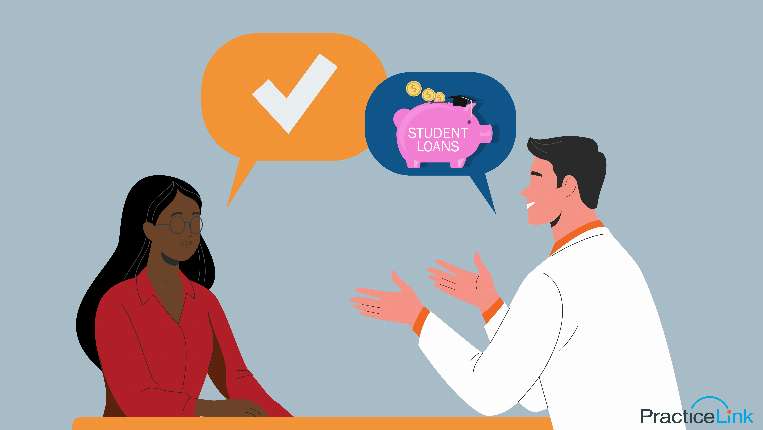Recruiting physicians with evolving student loan benefits

I recently polled a large group of in-house physician recruiters to learn more about how often student loans are discussed and how student loan benefits are leveraged in the recruiting process. I asked the following three questions:
1. Do you discuss outstanding student loans with your recruits? Roughly two-thirds of respondents said yes.
2.Does your hospital offer any form of student loan benefits to providers? Just over half, 52%, said yes.
3.Is your hospital a qualified employer for the Public Service Loan Forgiveness (psLf) program? More than 80% responded yes, and no one was unsure of this answer.
I hosted a similar session just two years ago, and the answers were decidedly different. Indeed, student loan benefits have increasingly become a consideration for providers making career choices, and these results reflect that.
But exactly what has changed in recent years, and if student loan support is emerging as a must-have employee benefit for this generation, what can you do to remain competitive?
The Great Resignation
Recent data from the aMa suggests that 1 in 5 physicians plan to leave their practice within the next two years. This elevated level of turnover will likely demand that earlycareer providers fill the resulting void. Doctors transitioning to practice today often carry more than $300,000 in federal debt and regularly state that student debt is their biggest financial concern.
Understanding this burden and providing relief can only improve your recruiting success. And in many cases, this doesn’t mean spending more money.
Here are the most common forms of student loan relief that physician employers provide today.
Lump-sum student loan repayment
A generous student loan repayment bonus at sign-on can certainly move the needle today for higher-dollar borrowers, but it doesn’t address the retention issue. These bonuses are often paid directly to loan servicers and are generally taxable, unlike National Health Service Corps and state-funded programs for physicians working in underserved areas.
A conversation around how this money is best applied in each borrower’s unique case is likely warranted. PSLF-qualified employers should be mindful that the provider shouldn’t pay more down on their debt than is required for federal loan forgiveness.
Annual student loan repayment
Like lump-sum student loan payments, annual payments are often paid directly to loan servicers over the course of three, five or more years, and better align with retention strategy. Again, these are typically taxable and can overlap with PSLf if the borrower isn’t strategic about their repayment strategy.
Monthly contributions
An increasingly popular benefit is a monthly student loan contribution. The spike in popularity is likely due to recent legislative changes that do not consider up to $5,250 of student loan repayment from an employer as taxable income, as long as the benefit doesn’t discriminate in favor of highly compensated employees. That said, if you’re only offering loan repayment to providers, it’s likely going to be taxable.
Once again, those pursuing PSLF will want to align this benefit with their greater strategy of maximizing forgiveness.
Tax-free Loan Repayment Assistance Program (LRAP)
Originally created and funded by law schools in the late 1980s to encourage public interest work, the LRAP is gaining broader popularity as the same public interest requirement to make the benefit tax-free applies to 501(c)(3) hospitals. By funding student loan payments on behalf of staff through a 501(c)(3), employers can offer unlimited student loan relief to select clinicians regardless of their income.
Public Service Loan Forgiveness (PSLF)
Physicians can benefit greatly from PSLF as time spent at most residency and fellowship programs counts toward the 10-year requirement.
Until last year, the vast majority of borrowers who applied for PSLF were denied forgiveness. But in October of 2021, the Biden administration loosened the requirements for PSLF through a "limited waiver" which positively impacts an estimated 1 million borrowers.
As reported by the Department of Education, on September 30 last year, prior to the October waiver, roughly 16,000 borrowers had received over $1.2 billion of tax-free loan forgiveness through PSLF. Just five months later, more than 100,000 borrowers had been forgiven more than $7 billion.
Though these numbers seem substantial, there’s nearly $124 billion in outstanding loan debt currently positioned for PSLF over the next 10 years for more than 1.2 million borrowers. You’ll be recruiting many of these borrowers in the coming years.
If you’re a psLf-qualified employer, list PSLF as a benefit in your job postings and mention it in discussions with recruits. It may be one of the reasons they are engaged with you, but our research suggests that fewer than 10% of qualified employers mention PSLF in recruiting today.
Jason DiLorenzo is the Founder of DWOQ, a student loan advisory dedicated to graduate health professionals, and BenElevate, a student loan employer benefit provider. Over his tenure, he and his team have consulted on over $5 billion in student loan debt for graduate health professionals.

